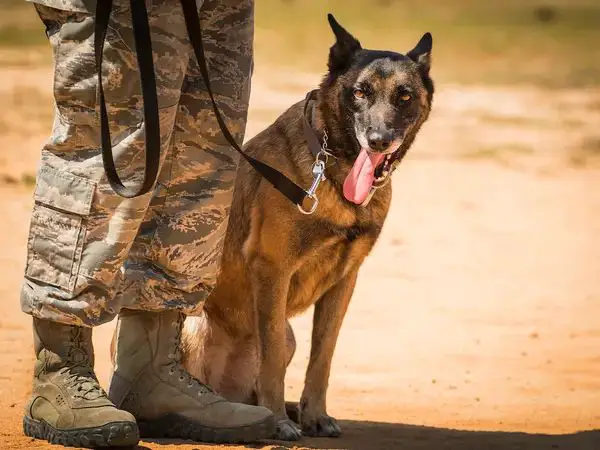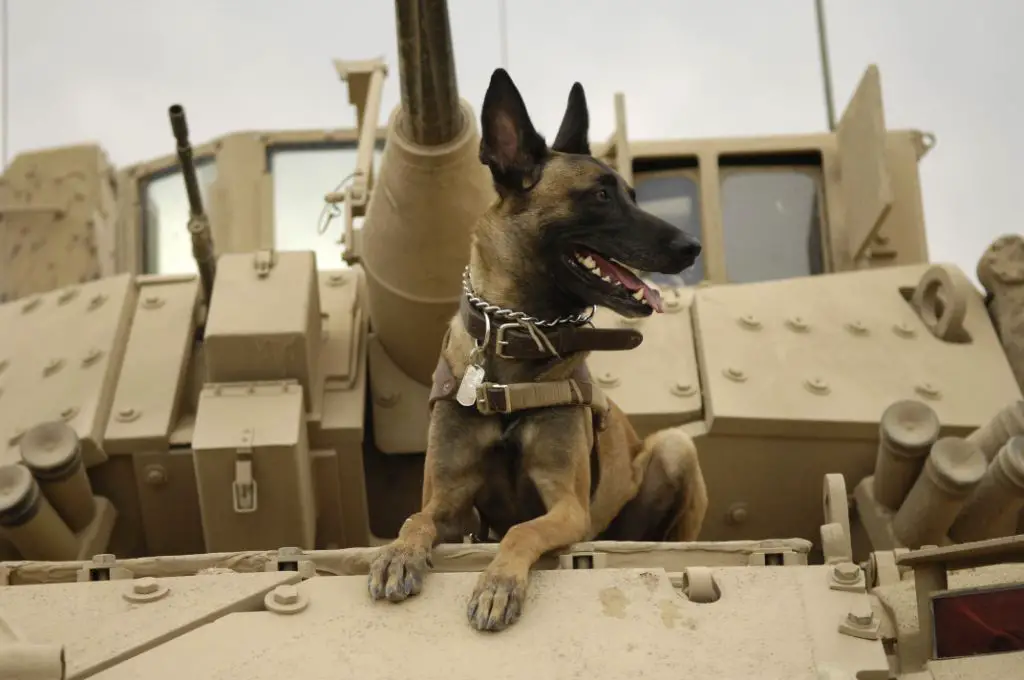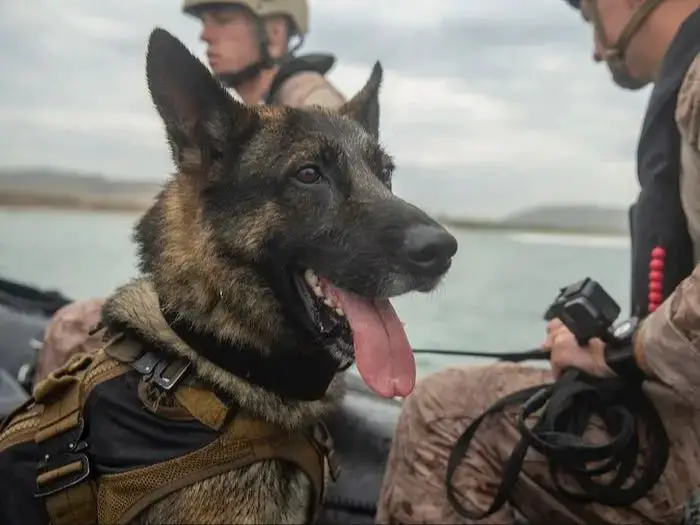Introduction
Delta Force is an elite special operations force in the United States Army that specializes in counter-terrorism, hostage rescue, direct action, and special reconnaissance. Officially known as 1st Special Forces Operational Detachment-Delta (1st SFOD-D), Delta Force was formed in 1977 in response to terrorist incidents in the 1970s. Its operational capabilities are highly classified, but Delta Force is known for its expertise in clandestine operations and unconventional warfare. Some of their most notable missions have included Operation Eagle Claw in Iran, the capture of Manuel Noriega in Panama, and the Battle of Mogadishu in Somalia. Delta Force operators are among the most skilled and experienced special operations soldiers in the U.S. military.
Roles of Dogs in Special Operations
Dogs play critical roles in special operations missions. The most common jobs for military working dogs in special ops are tracking, detecting explosives, and apprehending suspects.

Tracking is one of the main duties performed by dogs in special operations units. Their powerful sense of smell enables dogs to detect and follow human scent trails over a variety of terrains. This allows special ops teams to find enemies, lost comrades, or hidden items. According to the American Kennel Club, specialized tracking dogs are able to locate a specific human scent even days later (1).
Explosive detection is another vital role military working dogs fulfill. Their acute sense of smell allows dogs to sniff out explosive materials, weapons, and bomb-making components that may go unnoticed by humans. Dog handlers can then call in explosive ordnance disposal teams or take steps to neutralize threats. Explosive detection dogs help protect special ops teams from harm during missions.
Apprehending dangerous individuals is a further key job for dogs assisting special operations teams. Once a suspect has fled or is hiding, dogs can use their tracking skills to locate them. The dogs are also trained to physically restrain or incapacitate the individual until the handler takes over. Using dogs helps special ops units safely capture high risk targets.
(1) https://www.akc.org/expert-advice/news/what-are-military-working-dogs/
Breeds Used
Several breeds are commonly used in military and special operations work due to their intelligence, trainability, athleticism, and other desirable traits. Some of the most popular breeds include:

German Shepherds are one of the most widely used breeds in military and law enforcement operations around the world. They are highly intelligent, obedient, and strong. German Shepherds are frequently utilized for their scent detection abilities, patrolling, and search and rescue missions [1].
Belgian Malinois are known for their energy, drive, and versatility. Their athletic build and alert nature make them well-suited for physically demanding tasks like rappelling, parachuting, and apprehending suspects. Belgian Malinois are the breed most commonly used by US Navy SEAL teams [2].
Labrador Retrievers are the most popular breed used by the US military. Prized for their even temperament and high trainability, Labradors commonly serve as bomb-sniffing dogs, tracker dogs, and service dogs assisting disabled veterans [3].
Training
U.S. military working dogs go through rigorous training regimens to prepare them for their demanding roles. At Lackland Air Force Base in Texas, elite canine training programs condition dogs for specialty work like patrol, narcotics/explosive detection, and specialized search (341st Training Squadron – 37th Training Wing, n.d.).
According to the U.S. military working dog training handbook, dogs train for weeks, gradually increasing realism and difficulty. They master skills like obedience, agility, scent detection, and biting. Handlers also go through intensive instruction to learn how to work effectively with their canine partners (Department of Defense, 2011).
To become certified military working dogs, canines must pass stringent tests to prove their capabilities. Dogs that meet standards receive official documentation stating their specialized skills. However, training remains ongoing with regular drills and exercises (Department of Defense, 2011).
History of Dogs in U.S. Special Ops

Dogs have been utilized in warfare throughout history, but their roles expanded significantly during the Vietnam War. The U.S. war dogs saved over 10,000 lives in Vietnam, conducting tasks like scouting, tracking, sentry duty, and detecting mines and booby traps (The History of K9 Corps In The U.S. Army).
In the Iraq and Afghanistan wars beginning after 9/11, there was high demand for military working dogs to support special operations forces. Belgian Malinois emerged as a top dog breed, prized for their smarts, athleticism, work ethic, and ability to thrive in hot climates (Military Working Dogs: Canine War Heroes Through History).
Some famous modern military dogs include Cairo, a Belgian Malinois who helped the Navy SEALs take down Osama bin Laden; Conan, a Malinois who assisted in the mission against ISIS leader al-Baghdadi; and Lucca, a half-German Shepherd, half-Belgian Malinois who completed over 400 missions detecting explosives in Iraq and Afghanistan before retiring in 2016.
Famous Special Ops Dogs
Among the most well-known special ops dogs are Cairo, Dare, and Maiko. Cairo gained fame as part of SEAL Team Six, the elite team that took down Osama Bin Laden in 2011. This Belgian Malinois was trained to sniff out explosives and was crucial for securing the perimeter during the raid on Bin Laden’s compound in Pakistan.
Dare was another Belgian Malinois who served with the British Special Air Service (SAS). Highly skilled in tracking and attacking, Dare helped save lives during deployments in Afghanistan by locating IEDs and engaging the enemy when required. His exploits were featured in books like Soldier Five.
And Maiko was a German Shepherd who served with the U.S. Navy SEALs for 11 years. She participated in over 100 missions in Iraq and Afghanistan, leveraging her acute sense of smell and ability to operate off-leash to find hidden explosives and insurgents. Maiko was the recipient of the K-9 Medal of Courage award in 2015.
Benefits of Using Dogs
Dogs have superior senses compared to humans, which makes them uniquely suited for military operations. Their sense of smell is estimated to be anywhere from 10,000 to 100,000 times more acute than humans. This allows dogs to detect explosives, drugs, humans and other scents that would be impossible for their human handlers to pick up on (1). Dogs’ heightened hearing can also alert handlers to threats or sounds that they themselves cannot hear.
In addition to their sensory abilities, dogs are able to access areas that would be difficult or dangerous for humans to reach. Their agility and small size allows them to search buildings, vehicles, dense vegetation, tunnels, caves and other complex environments. Military working dogs are often sent into situations first in order to identify hazards before humans follow behind. Their speed and athleticism provides them an advantage in pursuing and apprehending suspects as well (2).
Overall, dogs’ superior senses coupled with their ability to access hard-to-reach areas provides significant tactical advantages for military and law enforcement operations. Their unique capabilities allows them to detect threats and assist handlers in ways no technology can truly match.
(1) https://www.military.com/daily-news/2014/11/11/military-working-dogs-to-receive-free-specialty-health-care.html
(2) https://www.marines.mil/News/News-Display/Article/560009/military-working-dogs-benefit-military-police/
Challenges of Using Dogs
Using military working dogs presents logistical challenges due to the unpredictable environments and operations in which they are utilized. Some key challenges include:
Transporting dogs to and around deployments – Military dogs must be safely and humanely transported which requires planning and resources for air/ground transportation and climate controlled conditions (1).
Providing veterinary care – Access to veterinarians and medical supplies may be limited in deployed areas so preventative care and evacuation plans are critical (2).
Kenneling and sanitation – Providing clean kennels and running water for cooling, sanitation, and preventing disease is difficult with limited resources (1).
Mitigating environmental hazards – Dogs can suffer from heat stroke and inhaling hazardous materials. Their paws may get burnt or cut requiring booties (3).
Working unpredictable shifts – Handlers must monitor dogs’ endurance, health, and safety working irregular shifts around the clock (3).
Maintaining psychological wellbeing – Dogs can experience stress and trauma like humans, requiring monitoring and interventions (2).
Delta Force Dog Use
Information on the specifics of dog use in Delta Force is limited, as most details of Delta operations are highly classified. However, some anecdotal evidence exists based on information that has been made public.
One of the most well-known Delta Force dogs is Conan, a Belgian Malinois who assisted in the raid against ISIS leader Abu Bakr al-Baghdadi in 2019. According to Wikipedia, Conan was named after comedian Conan O’Brien and trained to attack and apprehend high-value targets. He was instrumental in chasing al-Baghdadi into a tunnel where the terrorist leader detonated a suicide vest.
Other reports indicate that Delta Force utilizes dog breeds like German Shepherds and Belgian Malinois, which are known for their intelligence, athleticism and work drive. The dogs likely go through rigorous training to prepare them for raiding buildings, tracking targets, and attacking on command. Their skills in scent detection are also extremely valuable for Delta’s counterterrorism missions.
While Delta Force dog operations are secretive, dogs clearly play an important role in their high-stakes missions against dangerous targets. The premier counterterrorism unit relies on the unique abilities of canines to enhance their capabilities in the field.
Conclusion

Overall, while details about Delta Force operations are limited given their highly covert nature, dogs clearly play an invaluable role in special forces units like Delta Force. Their elite training, powerful senses, and ability to accompany operators into dangerous situations make dogs a key asset. For complicated missions like hostage rescue or targeting high-value terrorists, a well-trained dog can mean the difference between success and failure.
Looking across US special operations, dogs have saved countless lives and enabled difficult missions over decades of service. As warfare evolves with new threats and terrains, special forces will continue harnessing dogs’ capabilities in innovative ways. Their loyalty, athleticism and intelligence ensure dogs will always have a critical part in special ops.
